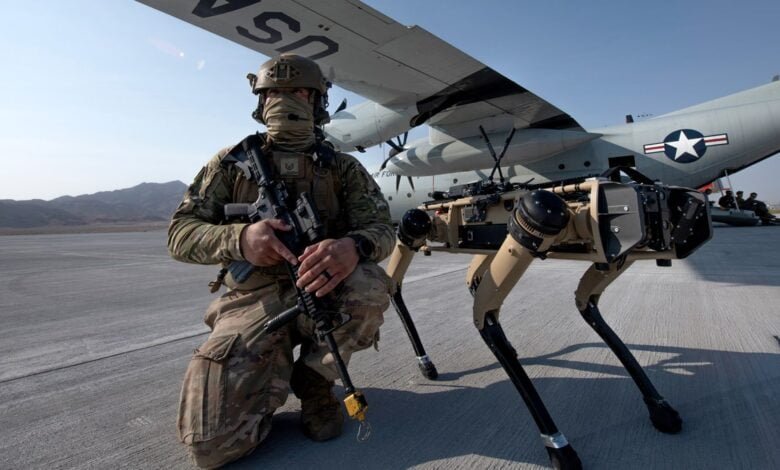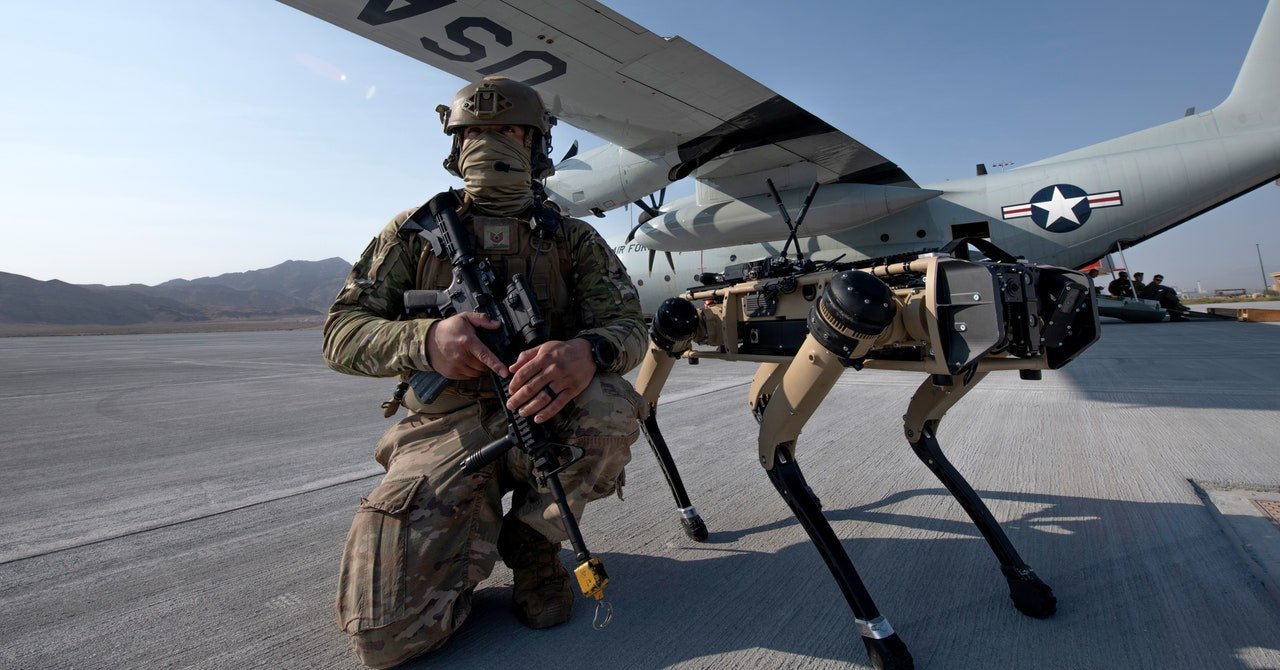Let Slip the Robot Dogs of War


“These dogs will be an extra set of eyes and ears while computing large amounts of data at strategic locations throughout Tyndall Air Force Base,” Major Jordan Criss, 325th Security Forces Squadron commander, said of the systems during initial testing in late 2020. “They will be a huge enhancement for our defenders and allow flexibility in the posting and response of our personnel.”
In the intervening years, robot dogs have become an increasingly common fixture across the US military, beyond patrolling sensitive installations. In July 2023, Minot Air Force Base in North Dakota introduced robot dogs to enable airmen to respond to chemical, biological, radiological, and nuclear threats “without risking the safety of themselves or others.” In August, Patrick Space Force Base in Florida added robot dogs to its perimeter security rotation for an “additional detection and alert capability.” That same month, the Naval Surface Warfare Center, Philadelphia Division, announced the employment of robot dogs to “build 3-D ship models aboard the ‘mothballed’ fleet of decommissioned ships at the Philadelphia Navy Yard,” while the Coast Guard unveiled four-legged “droid” dogs in Hawaii to “combat weapons of mass destruction.” Finally, in November, airmen at Barksdale Air Force Base in Louisiana debuted robot dogs for explosive ordnance disposal.
Despite these practical noncombat applications, some robotics companies have had an eye on weaponization. In October 2021, Ghost Robotics showed off a so-called “Special Purpose Unmanned Rifle,” or SPUR, quadrupedal robot with an 6.5-mm Creedmoor assault rifle developed by SWORD International mounted on its back during an annual Army weapons expo in Washington, DC, in the first public example of a robot dog armed with a firearm. The following year, a video of a robot dog outfitted with a PP-19 Vityaz submachine gun by Russian entrepreneur Alexander Atamov quickly went viral on YouTube and Twitter. By 2023, an American company had debuted a robot dog with a flamethrower strapped to its back, albeit not explicitly for military use (no longer fielded to US soldiers, using flamethrowers against enemy combatants is technically not prohibited). Like the Predator drone, you can’t build a new robot without someone slapping a weapon on it.
Cry Havoc
The public reception to weaponized robot dogs is overwhelmingly defined by concern mixed with discomfort, especially given the rise of autonomous or semiautonomous weapon systems that can independently track and identify targets. Even beyond the conventional invocation of Terminator-inspired techno-anxiety, the robot dogs appear eerily reminiscent of the menacing mechanized canines of Black Mirror.
Part of the creep factor stems from the “uncanny valley,” says Singer, invoking the psychological phenomenon in which robots that look and act almost-but-not-quite natural end up unnerving their human observers. “On the engineering side, these robots take inspiration from nature, since real dogs are, through evolution, designed to operate really well in the field,” Singer says. “As a result, we layer our beliefs about these types of creatures on top of ‘bioinspired’ robots, and the more something acts lifelike but not likelike, the more we react with fear or disgust.”
Source link




